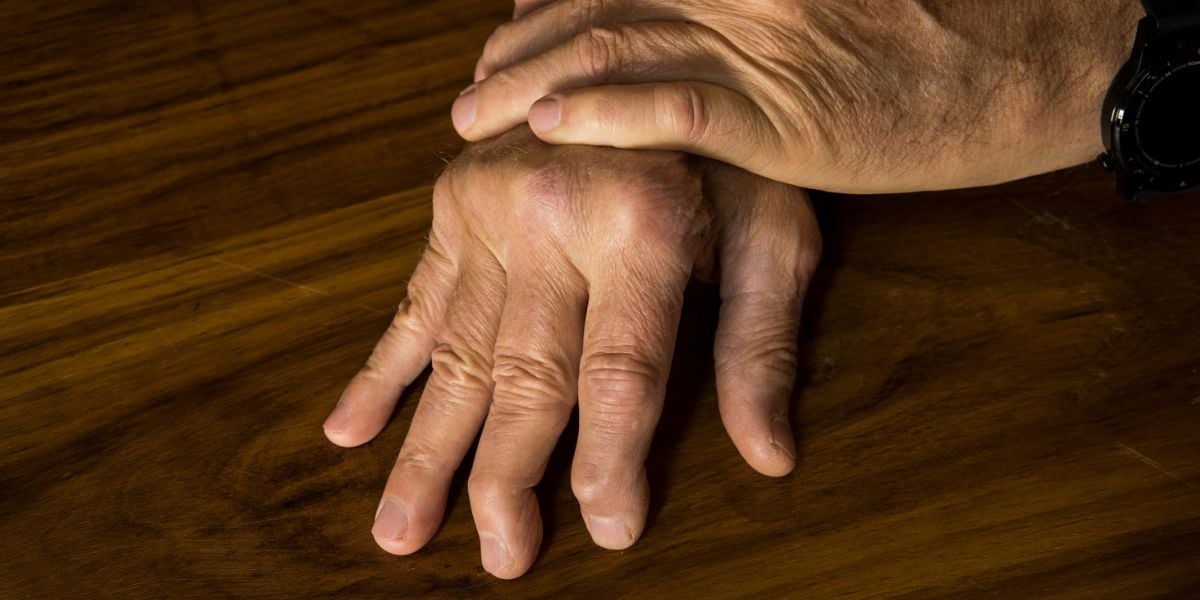Carpal tunnel syndrome (CTS) is found in the wrist, and occurs when a nerve in the carpal tunnel that controls sensation and hand movement becomes compressed.
This nerve (median nerve) becomes pinched due to the swelling and can cause tingling, numbness and pain in the hand, fingers and forearm.
Having diabetes can increase the risk of getting carpal tunnel, while researchers have also found that having carpal tunnel syndrome could be a predictor for developing diabetes.
Carpal tunnel syndrome is more common in people with diabetes
The relationship between diabetes and CTS is complicated, but carpal tunnel syndrome is generally believed to be more common in individuals with diabetes, even those without diabetic nerve complications
Carpal tunnel syndrome is widely reported in up to between 15-20% per cent of people with diabetes , with research suggesting the link between diabetes and carpal tunnel syndrome could be due to excessively high blood sugar levels.
This can result in carpal tunnel tendons becoming glycosated, which occurs when glucose attaches to the tendon proteins and restricarpal tunnel syndrome their ability to move freely.
Indicative of diabetes diagnosis
When there is overly high sugar in the blood it may begin to start affecting the body years before a diagnosis of diabetes. The development of carpal tunnel syndrome could therefore be indicative of a future diabetes diagnosis.
One study conducted at King’s College in London found that people diagnosed with carpal tunnel syndrome were 36 per cent more likely to be later diagnosed with diabetes This was regardless of other risk factors for diabetes.
Diabetic neuropathy
Carpal tunnel syndrome is a common entrapment neuropathy, a medical condition that occurs when a single nerve is damaged.
Researchers at the Diabetes Institute, Eastern Virginia Medical School report in the journal Diabetes Care that entrapment neuropathies are prevalent in those with diabetes, affecting in 1 in 3 patients.
Diabetes is a condition in which nerves become vulnerable to compression due to the blood supply of the nerves already being affected. This can make them more sensitive to minor compression.
When nerve damage occurs in people with diabetes, this results in diabetic neuropathy, which can be the result of high blood glucose levels damaging the small blood vessels which connect to the nerves.
While diabetes can be a cause of carpal tunnel syndromen, carpal tunnel syndrome can be a predictor of diabetes and diabetic neuropathy due to this damage done to the nerves.
However, diagnosis of carpal tunnel syndrome can be complicated in people with diabetes if they have underlying peripheral neuropathy, unrelated to carpal tunnel syndromen, which can cause similar symptoms such as tingling or numbness.
Symptoms of carpal tunnel syndrome
The symptoms of carpal tunnel syndrome can affect all parts of the hand, but tend to involve:
- the thumb
- index finger and
- middle finger
If you feel a tingling sensation, numbness and pain in these fingers, and half of your ring finger, but not your little finger, this could be indicative that you have carpal tunnel syndrome. Feeling to the little finger is provided by different nerves.
Sensations usually appear at night, where they can develop gradually and can become much worse as the evening goes on.
These symptoms often affect both hands eventually, and can sometimes extend beyond the area in which the median nerve passes, resulting in arm ache.
What causes carpal tunnel syndrome?
The cause of carpal tunnel syndrome cannot be found in some cases, but pressure on the median nerve – which results in carpal tunnel syndrome – often occurs from a combination of activities and health conditions.
There a number of things believed to increase the risk of carpal tunnel syndrome developing, including:
- Health conditions which can reduce blood flow to the hands, such as diabetes, obesity , rheumatoid arthritis and gout
- Previous injuries or damage to the wrist, such as broken or dislocated bones.
- Repetitive, strenuous hand movements
- Pregnancy – Roughly 50 per cent of women develop carpal tunnel syndrome during pregnancy
- Family history of carpal tunnel syndrome
Diagnosing carpal tunnel syndrome
Your doctor will initially question you on your symptoms, the times which they appear and when they first started.
A physical examination will follow to test the feeling in your fingers and to assess whether flexing your wrist – a common technique for diagnosing carpal tunnel syndrome – can be done without any pain being induced.
A blood test may be conducted if an underlying condition relating to carpal tunnel syndrome is suspected, while further tests could be administered if your doctor is looking to rule out conditions with similar symptoms. These tests include:
- Electromyogram – tests electrical activity of muscles and if nerve damage has occurred
- Nerve conduction study – measures the speed in which signal transmit through nerves
- X-Ray or ultrasound scan – to view the inside of the body
Treating carpal tunnel syndrome
Carpal tunnel syndrome treatment can be done without surgery if symptoms are mild, while in some cases carpal tunnel syndrome will disappear without treatment.
Self-care practises such as avoiding excessive repetitive movement and gripping will help, while painkillers may be prescribed to deal with any pain.
If you work at a desk, adjusting your seat and keyboard may help with optimising comfort, while people who are overweight will be advised to lose weight to reduce carpal tunnel syndrome symptoms.
Non-surgical treatments include wrist splints (braces) and steroid injections can be used to treat mild or moderate symptoms. However, if these treatments fail to relieve symptoms, surgery will provide the best chance of a long-term cure and avoiding permanent nerve damage.







